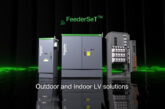
Jake Green, Head of Technical Engagement at Scolmore Group, considers some types of RCBOs and their applications, along with the relevant requirements of BS 7671.
Residual current operated circuit-breakers with integral overcurrent protection for household and similar uses, or RCBOs, are intended to protect people against earth fault current under the protective measure Automatic Disconnection of Supply (ADS), as well as additional protection. RCBOs also provide protection against both short-circuit and overload.
The standard to which RCBOs conform is BS EN 61009-1 and the UK has a special national condition (SNC) whereby RCBOs providing protection for circuits having neutral conductors reliably at Earth potential are permitted to have an unswitched neutral; that is in the UK where the Earthing System is TN-S or TN-C-S RCBOs are permitted to be single-pole devices.
Difference between single-pole and double-pole devices
BS EN 61009-1 defines ‘pole’ as: ‘that part of an RCBO associated exclusively with one electrically separated conducting path of its main circuit provided with contacts intended to connect and disconnect the main circuit itself and excluding those portions which provide a means for mounting and operating poles together’.
Furthermore, BS EN 61009-1 defines the ‘overcurrent protected pole’ as one which is, ‘…provided with an overcurrent release…’. The ‘switched neutral pole’ is given as ‘pole only intended to switch the neutral and not intended to have short-circuit capacity’.
Taking all definitions into account, it is important to recognise what this means when a manufacturer defines a product as single-pole (SP), single-pole and neutral (SP&N) and double-pole (DP).
• SP – a device having no connection point for the neutral conductor. The circuit neutral conductor will be connected to the common neutral bar. When the RCBO is switched on or off the neutral will remain connected in circuit and only the line conductor will open or close.
• SP&N – a device having a connection point for the line and neutral conductors and typically taking up two ways on the distribution board. When the RCBO is switched on or off both the line and neutral conductor will open or close. However, the neutral connection will not have short-circuit capacity. Often the SP&N device switch will only have a single switch whereas the DP device will have a switch covering both poles.
• DP – a device having a connection point for the line and neutral conductors and will typically take up two ways on the distribution board. When the RCBO is switched on or off both the line and neutral conductor will open or close. The neutral connection will have short-circuit capacity.
Being a combination of circuit-breaker and RCD, RCBOs may be selected for use for both overcurrent protection and additional protection, and recognising the benefits of an RCBO as:
• Individual additional protection and control of final circuits
• Easier to fault find
• Less chance of unwanted operation.
Overcurrent protective devices
The requirements of overcurrent protective devices used for protection against electric shock are detailed in Section 533 (531.2.1 refers). For TN systems such devices must be selected and erected to comply with Chapter 41 (531.2.2).
Except in certain conditions detailed in Part 7, it is worth noting that there is no requirement under overcurrent conditions to disconnect/switch the neutral in TT or TN systems (531.2.2.201).
Residual current devices
The requirements for RCDs are detailed in Regulation Group 531.3.
Regulation 531.3.1 requires an RCD to disconnect all live conductors (line and neutral in a single-phase circuit). However, Regulation 531.3.1.201 permits single-pole switching where the neutral is in a TT or TN system (531.3.1.201); such systems being the most common type.
RCDs should be selected and erected to avoid unwanted tripping, and to this end Regulation 531.3.2 details six areas of consideration. Amongst other things, indent (i) allows for a split board with a suitable subdivision of circuits, and indent (ii) suggests the use of RCBOs will be beneficial in residential premises.
Part 7
There are certain installations detailed in Part 7 where the general rules relating to overcurrent protection and RCDs are amended, and these will have an impact on the type of RCBO selected for use.
Section 708 (Electrical installations in caravan/camping parks and similar locations) requires all poles to be disconnected for all socket-outlets protected by an RCD. Under such cases the RCD/RCBO must not be single-pole (708.415.1).
Section 709 (Marinas and similar locations) also requires socket-outlets to be individually protected by an RCD and disconnect all poles, including the neutral (709.531.2).
Section 721 (Electrical installations in caravans and motor caravans) requires all live conductors to be disconnected where an RCD is supplied for additional protection (721.415.1).
Section 722 (Electric vehicle charging installations) requires all live conductors to be disconnected where an RCD is installed (722.531.3.1).
Section 730 (Onshore units of electrical shore connections for inland navigation vessels) requires socket-outlets to be individually protected by an RCD and disconnect all poles, including the neutral (730.531.3).
Conclusion
It’s important to select for use the correct type of RCBO for the nature of the installation. There will be instances where single-pole devices will need to be replaced with either single-pole and neutral or double-pole devices.
Get more details about the full Elucian range of circuit protection products and solutions here
Find more industry technical articles here











